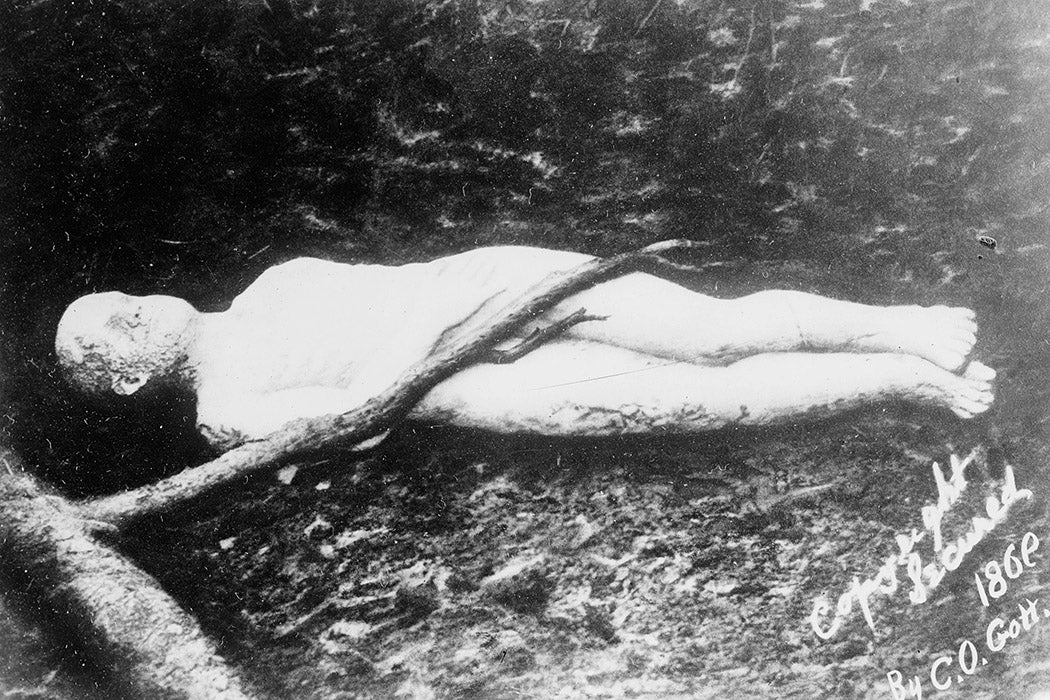“There were giants in the earth in those days,” says Genesis 6:4, and for a fundamentalist, it must have been so. An argument about the literalness of this passage convinced the skeptical George Hull to pull a fast one and cash in on the credulous. It was an era of hoaxes, of P. T. Barnum and his “humbugs,” and, as ever, people eager to believe.
Thus was born the Cardiff Giant. Also known as the American Goliath and the Onondaga Giant, this was a supposedly petrified ten-foot tall man, unearthed on Stub Newell’s farm outside Cardiff, New York in October of 1869. It was the hoax of 19th century hoaxes. Almost forgotten, the stone statue of the hulking naked man is today exhibited at the Cooperstown, N.Y. Farmer’s Museum.
Barbara Franco and Michael Pettit detail the elaborate hoax and offer their interpretations. It started with a big block of gypsum purchased in an Iowa quarry. This was carved in Chicago, “aged” by Hull himself (who modeled for the two sculptors), and shipped to New York State to be buried for nearly a year. Hull was nothing if not patient; he also spent a good deal of money on the hoax.
Then workmen digging a well “discovered” it. The sensation was instantaneous, spreading from Cardiff to Syracuse to New York City and Boston. Admission was 50 cents a head, which corresponds to about what we’d now pay for a movie ticket.
Some observers were dubious from the start, but the debate between the “petrifactionists” and those who believed it to be just a statue helped to prolong the fraud. The Giant even received a few write-in votes for various political offices around Syracuse that November.
P.T. Barnum, unable to buy the “original,” simply had a copy made. The copy fake drew a larger crowd then the original fake when they were both exhibited just a few blocks from each other in New York City.
O.C. Marsh, soon to be one of the country’s preeminent paleontologists, declared it “of very recent origin and a decided humbug.” Hull fessed up in December, laughing all the way to the bank.
Pettit offers a reading of the reception of the Giant that may strike some familiar chords today. What is science’s authority? Can laypersons look at the evidence and decide for themselves if a humbug is true? In the case of the physics of global warming, for instance, enough Americans today claim to believe differently to power an entire political party. Humbuggery was a form of mid-to-late 19th century entertainment – to “spectacularly stage the principle of the uncertainty of knowledge”: today it’s a form of politics.







